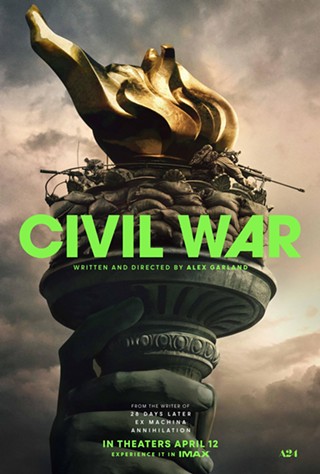Frontal lobotomies were hailed as a breakthrough in the 1930s. We know better now. Collective hindsight has a way of informing us of this kind of thing. Similarly, it may seem logical to conclude that, when conducting an experiment in which a group of college-aged men role-play as prisoners and prison guards, things would not go smoothly.
In 1971, however, science had not answered the question (or had not read Lord of the Flies), and Phillip Zimbardo really wanted to see what the outcome might be. So did the U.S. Office of Naval Research, which funded his study that sought to uncover causes of conflict between authority and those held captive. During the Vietnam era, you can clearly see the interest from the military.
The new film that brings these events to life, The Stanford Prison Experiment, doesn't blink when the going gets rough. There is a lot of degradation, shouting and at least borderline abuse, and even though it was designed to just be a two-week experiment, you get the sense that it may not last that long before something barbaric happens.
That sense also hits Zimbardo (Billy Crudup) before the study is too far along. He watches the personalities reveal themselves over a network of security cameras, and soon enough, the darker instincts of absolute power are on full display. When a guard emerges as the de facto leader of the authority figures and is dubbed "John Wayne" by fellow guards and the prisoners, all hell starts to break loose.
The transformation of "John Wayne" (Michael Angarano) begins with a reference to the ball-busting warden in Cool Hand Luke, and little by little, the guard—who, again, is just a Stanford student like everyone else—becomes more and more despotic. By the end of the second day, one of the prisoners pleads to leave and Zimbardo and his research staff question whether to continue the experiment.
They do, of course, with predictable mayhem. The prisoners have long been stripped of their names, only being called or responding to their inmate numbers. There are skirmishes and parole hearings for prisoners who want out. With each new dust-up tensions get more inflamed, and there is very little release for the prisoners.
Director Kyle Patrick Alvarez and writer Tim Talbott (who, amazingly, also wrote for South Park once upon a time) have created a realistic horrorscape that makes and keeps you uncomfortable. Zimbardo himself, who was not a part of the production, said this summer that The Stanford Prison Experiment is about as accurate as a film could make his study.
Of course, to make it a palatable movie, the filmmakers have to have main characters you grow to like or dislike. Certainly, Ezra Miller as prisoner 8612 draws a lot of sympathy, while Michael Angarano is unsurprisingly easy to hate. Caught in the middle is Crudup and Nelsan Ellis, brought in to consult the project as someone with years of experience as an ex-con. All four of them are terrific anchors, each showcasing different points of view.
This is, if it hasn't been made clear already, a tough watch. Alvarez breaks the intensity now and again but the overall feeling is claustrophobic and uncompromising.
The impact of the Stanford study has been far-reaching, used to explain, among other things, the Abu Ghraib torture scandal. As depicted here, it's easy to see how the close quarters and the strongly implied authority could lead some people down such a dark road. Especially when it's not just pretend.










